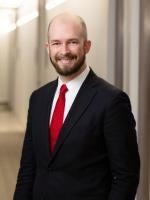On this episode of the Bracewell Environmental Law Monitor, host Daniel Pope talks with Jason Hutt, and Mike Borkowski about the development of renewable energy resources on properties that may have historical environmental liabilities.
Jason Hutt is a partner in our Washington DC office and chair of the Environment, Lands and Resources practice.
Mike Borkowski is the president of the Community Power Group.
Tell us about Community Power Group, including your role and vision.
I started a company called EPG Solar back in 2010. We've since converted the name to Community Power Group. The founding thesis of the company was that solar was just becoming financially viable at the time. Obama had stepped into the administration for a couple of years, and there was both Republican and Democratic support for renewable energy projects. With all that, coming together were leaning to projects that were starting to compete with fossil fuels. We saw an opportunity to step into the industry and keep our focus on projects that would be financially viable in areas of land that people were open and accepting of solar energy.
Our goal is to provide cheaper energy that can be found on the grid, on land that isn't really usable for other things. Since then, we've migrated a little bit and we have some other things. We do a lot of community solar. We dedicate community solar projects to disadvantaged communities. More recently, with a lot of the changes we've started working with corporates too and how do they become green in a profitable way.
What do we mean when we say brownfields?
Environmental law holds owners and operators of properties responsible for any release of hazardous substance that requires remediation. The scheme that began under a statute called CERCLA established a strict liability concept, which was very important to facilitating the cleanup of contaminated sites. It simply mattered whether there was a release. And then the parties that fell into that net of responsibility is everyone in that chain of title, both as owner and operator. So, it’s a joint and several liability scheme, meaning that not only is it joints over liability, but if there's an orphan share. If one of those parties can’t stand up for their portion of the responsibility, that orphan share is distributed to the remaining viable parties.
What steps can developers take to minimize the likelihood that they could be responsible for cleaning up or remediating a release or in addressing any other kinds of site liabilities?
Solar projects do not go bankrupt. As long as the sun is shining, the solar panels are creating energy and that solar project is financially viable. When the company goes into bankruptcy, the first thing the bankruptcy court do is make sure all the lease and rent payments are made so that there's no default on that lease because that is going to be the most valuable asset in the sale of the bankruptcy.
What we then have to think about is how do we, as a landowner, protect ourselves to make sure that that solar facility stays operating for its 35-year expected life. One of the most important things that people don’t think about inside their contract is making sure that the solar company has adequate insurance in place. The biggest risk to solar farms is a hailstorm, a tornado or some type of water issue depending on what your proximity to any type of water features are.
Are there any other steps you would recommend from the legal side to minimize those sorts of risks of getting swept into the net?
In addition to the statutory liability regime, you can contractually allocate those statutory responsibilities between you and your counterparties. If you're a landlord, you want to think about your residual responsibilities at the site. How are you going to deal with any preexisting contamination? How do you assure yourself that the solar array doesn't affect your ability to deal with that at the end of the life? Who's going to have control over the property during the period that the solar array is there? Who's going to be responsible if the neighbors do something to the property during the use period? Who's really in a position to control that? How do you take advantage of those additional end of life obligations that might be postponed by the existence of the solar facility? From the solar company's perspective, they only want to be, from a contractual standpoint, responsible for the impacts from their use of the property during construction and operation and decommissioning of the solar array.




 />i
/>i
